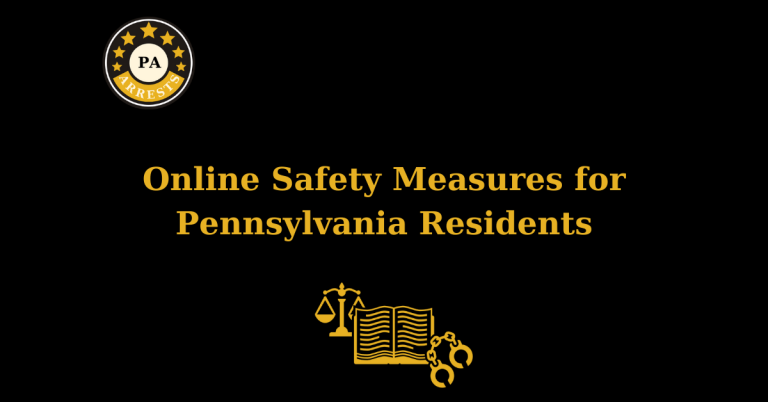Securing Pennsylvania: Cyber Tips for Digital Safety

As technology continues to advance at an unprecedented rate, it has become more important than ever to prioritize our digital security. In an increasingly interconnected world, our personal information is constantly at risk of being compromised.
With cyber threats becoming more sophisticated and prevalent, it is crucial for individuals and businesses alike to stay informed and take proactive measures to safeguard their online presence. Our team of cybersecurity experts has curated a comprehensive guide that offers valuable tips and insights specifically tailored to the unique needs of Pennsylvanians. Whether you’re a tech-savvy individual or just starting to explore the digital landscape, our goal is to empower you with the knowledge and tools to navigate the digital world with confidence.
Stay Ahead of Emerging Cyber Threats
In a constantly evolving digital landscape, it is crucial to stay one step ahead of cyber threats. we understand the importance of proactive measures to safeguard your online presence. Our team of cyber-security experts is dedicated to helping Pennsylvanians protect themselves and their digital assets.
Comprehensive Guide for Digital Security
Our guide is designed to provide you with the knowledge and tools necessary to navigate the digital world with confidence. With cyber threats becoming increasingly sophisticated and prevalent, it is essential to stay informed and take necessary precautions.
Tailored Tips for Pennsylvanians
We understand that the digital security needs of Pennsylvanians may differ from those in other regions. That’s why our guide is specifically tailored to address the unique challenges and concerns faced by individuals and businesses in Pennsylvania.
Protect Your Personal Information
Your personal information is constantly at risk of being compromised. Our guide offers valuable insights on how to safeguard your personal data, including tips on creating strong passwords, detecting phishing attempts, and securing your social media profiles.
Secure Your Business from Cyber Attacks
Businesses are increasingly becoming targets for cyber attacks. Our guide provides practical advice on how to protect your business from data breaches, ransomware attacks, and other cyber threats. From implementing robust security measures to training employees on best practices, we have you covered.
Stay Up-to-date with the Latest Security Trends
As technology continues to advance, so do the tactics employed by cyber-criminals. Our guide keeps you informed about the latest security trends, ensuring you are equipped with the knowledge to combat emerging threats effectively.
Empowering You with the Right Tools
Knowledge is power, but having the right tools is equally important. Our guide not only provides valuable insights but also recommends trusted cyber-security tools and resources to help you enhance your digital security.
FAQs
Why is cyber-security important?
Cybersecurity is crucial as it safeguards digital systems, networks, and sensitive information from cyber threats, ensuring the integrity, confidentiality, and availability of data. In an interconnected world, where cyberattacks are increasingly sophisticated, robust cybersecurity measures are essential to protect individuals, organizations, and governments from financial losses, data breaches, and potential disruptions to critical infrastructure.
What are some common cyber-security threats?
Common cybersecurity threats encompass a range of malicious activities targeting computer systems, networks, and data. Some prevalent threats include:
Malware: Malicious software, including viruses, worms, Trojans, and ransomware, designed to damage or gain unauthorized access to systems.
Phishing: Deceptive attempts to trick individuals into revealing sensitive information, often through fraudulent emails, messages, or websites.
Ransomware: Malware that encrypts data, demanding payment for its release, posing a significant threat to data integrity and availability.
Distributed Denial of Service (DDoS) Attacks: Overwhelming a system, server, or network with excessive traffic, rendering it unavailable to users.
Man-in-the-Middle (MitM) Attacks: Interception of communication between two parties, allowing attackers to eavesdrop or manipulate data.
SQL Injection: Exploiting vulnerabilities in web applications to manipulate a database, potentially gaining unauthorized access to sensitive information.
Zero-Day Exploits: Attacks targeting undiscovered vulnerabilities, for which no security patches or fixes are available.
Social Engineering: Manipulating individuals to divulge confidential information or perform actions that compromise security.
Insider Threats: Risks posed by individuals within an organization who misuse their access or knowledge to compromise security.
Password Attacks: Attempts to gain unauthorized access by exploiting weak or compromised passwords through methods like brute force attacks.
IoT Vulnerabilities: Exploiting security weaknesses in Internet of Things (IoT) devices, potentially leading to unauthorized access or data breaches.
Unpatched Software: Exploiting vulnerabilities in outdated or unpatched software that lacks the latest security updates.
Credential Theft: Illegitimate acquisition of usernames and passwords, often through phishing or malware, to gain unauthorized access.
Eavesdropping: Unauthorized interception of communication, either through physical means or by exploiting network vulnerabilities.
Drive-By Downloads: Malicious downloads that occur without the user’s knowledge or consent when visiting compromised websites.
Effective cybersecurity measures involve a combination of robust security policies, regular updates, employee training, and the use of security tools and technologies to mitigate these threats.
How can I secure my online accounts?
To enhance the security of your online accounts:
Use Strong Passwords: Create complex passwords with a mix of uppercase and lowercase letters, numbers, and symbols.
Enable Two-Factor Authentication (2FA): Add an extra layer of protection by requiring a second form of verification, typically a code sent to your mobile device.
Regularly Update Passwords: Change passwords periodically to minimize the risk of unauthorized access.
Be Wary of Phishing Attempts: Avoid clicking on suspicious links or providing personal information in response to unsolicited emails or messages.
Monitor Account Activity: Regularly review your account activity and set up notifications for any unusual or unauthorized logins.
What are some best practices for safe internet browsing?
To ensure safe internet browsing, always use secure websites (look for HTTPS), avoid sharing personal information on untrusted sites, keep your browser and antivirus software up to date, and be wary of clicking on pop-up ads or downloading files from unknown sources.
How can I protect my home network?
To protect your home network, change the default router password, use strong Wi-Fi encryption (WPA2), regularly update your router’s firmware, and enable network firewalls. Additionally, avoid connecting to unsecured public Wi-Fi networks.






